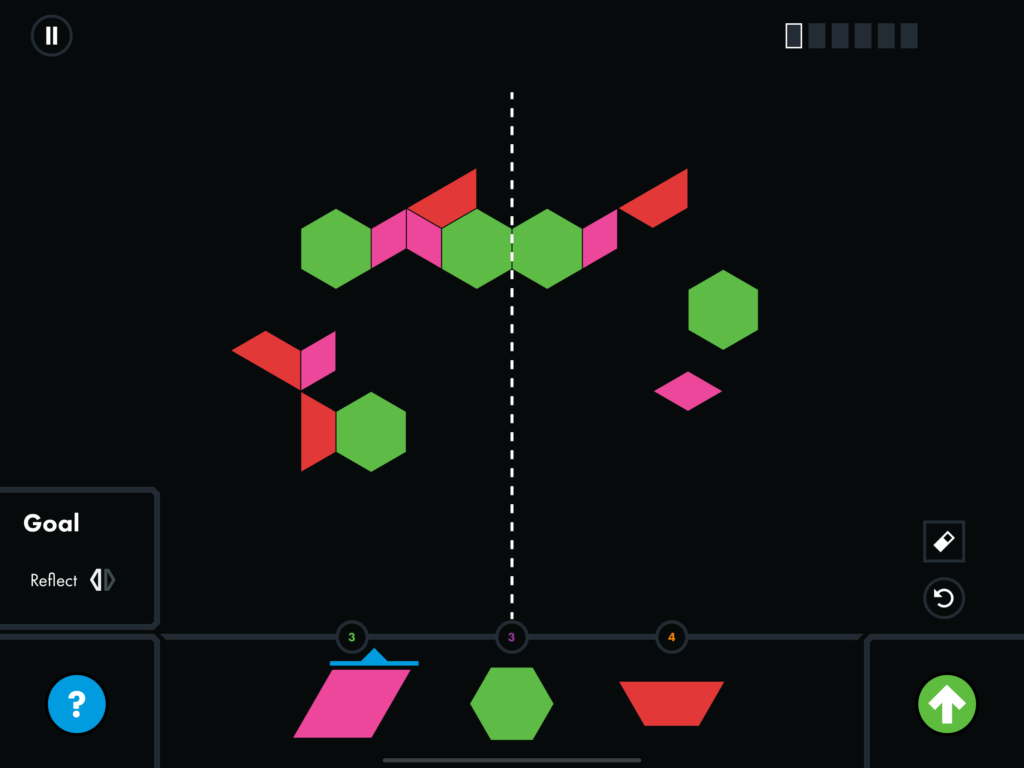
The Missing Link in Early Math Education

When most of us think about doing math, we picture problems filled with numbers and symbols. While there is no doubt that symbolic representations are an integral part of math education, arguably the most underlooked aspect of early math education is the development of students’ spatial skills.
Spatial skills are the ability to visualize, manipulate, and analyze objects in space and are a critical component of mathematical understanding and cognitive development. An abundance of research has shown that training young students’ spatial skills has profound impacts on students’ future mathematical and scientific success.
The importance of spatial skills goes far beyond science and math however, as spatial skills have been linked to the development of early writing skills, motor skills, and executive functions.
Importantly, studies have shown that spatial skills can be improved with practice, and that digital tools such as Tile Farm are a powerful tool for improving spatial skills.
Bottom line, the development of spatial skills should be an integral part of any child’s education. Tile Farm’s products are filled with diverse opportunities for students to develop their spatial skills in fun and playful contexts. In this blog post we highlight three easy ways to develop your children’s spatial skills in Tile Farm.
1. Solving Geometric Puzzles in Tile Farm Academy

Tile Farm Academy is filled with a wide variety of puzzles that develop students’ spatial skills while teaching them to build beautiful geometric patterns. These puzzles also develop students’ patience and persistence in problem solving and endow them with the skills to become adept problem solvers.
Tile Farm’s adaptive algorithms gradually increase the difficulty of these puzzles over time, aiming to maximize the development of students’ spatial and problem solving abilities.
2. Linking Spatial and Numeracy Skills in Tile Farm Academy

Tile Farm has developed a unique way to teach mainstream math curricula in a highly visual manner. This not only develops students’ spatial skills, but helps deepen students’ understanding of numbers.
Scientific evidence has shown that learning math with visual representations gives students a deeper conceptual understanding of numbers that allows them to more readily apply their knowledge in diverse situations. Furthermore, highly visual math problems have been shown to reduce students’ anxiety about learning math, and serve as a stepping stone for eliminating pervasive negative attitudes about math learning.
3. Free Play in Tile Farm Studio

Arguably the best way for students to develop their spatial skills in Tile Farm is to simply play in Tile Farm Studio.
Simple building activities are not only considered an optimal way to develop students’ spatial skills, but they offer endless opportunities for creativity and self expression. It isn’t too hard to imagine that the same skills developed by playing in Tile Farm Studio, easily translate to successful careers in anything ranging from engineering to architecture to art.
Looking for a fun activity to do with your children in Tile Farm Studio? Try checking out our YouTube channel for fun activities and projects.
Interested in learning more about the Science of Tile Farm? Check out the whole blog series here!
Sign up now and gain access to the full suite of Tile Farm products!
Use code LAUNCH to receive up to $50 in Tile Farm Maker credit when you subscribe.